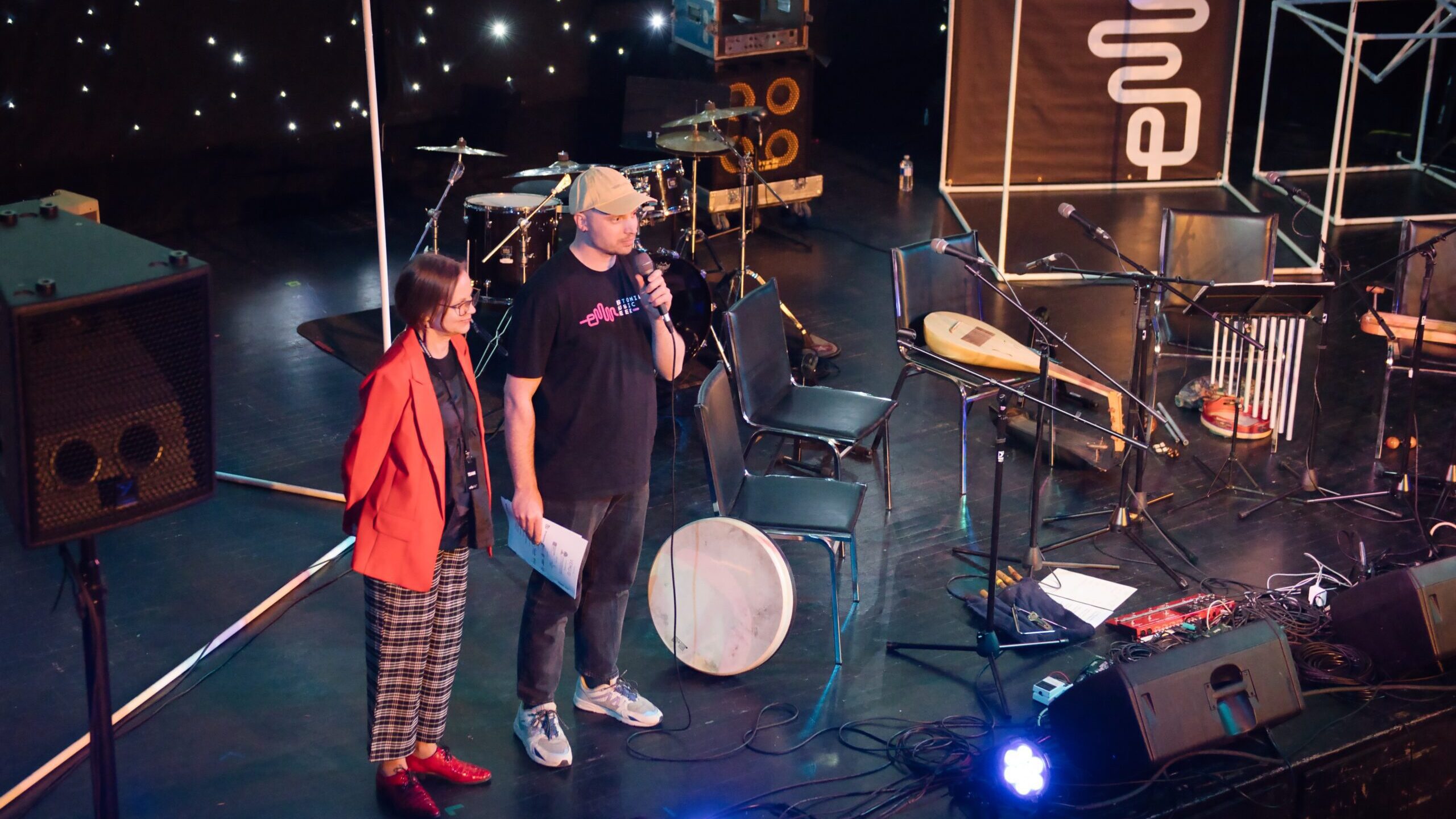Five years on from the very first EMW, there were hints of what it has always been, but otherwise, signs that it had evolved. Take for instance, the presence of networking events. On Wednesday May 24th artists and music industry professionals gathered at The Annex Hotel in Toronto for the first of two Nordic Connect Conference sessions. This time, artists offered information on the Estonian music market and the genesis of Estonia's booming folk scene.

Festivalgoers flocked to familiar locations, like Tartu College, where the Launch Party took place right after the first conference. While drinks and bites floated around, pianist Kirke Karja, early music experts Ansambel Triskele, and singer-songwriter Mari Kalkun serenaded the room. The audience befriended the artists. The party was jubilant, with spontaneous singing at times.
Thursday May 25th exemplified differences in space utilization. At St. Anne’s Anglican Church and Parish Hall in the west end of Toronto, incendiary jazz, heart-wrenching folk, and fierce electronic compositions soared high to the ceilings. Particularly at the jazz stage in the church, a Byzantine Revival building from 1908 with decorations from members of the Group of Seven. Kirke Karja Trio crafted daring improvised music, shattering the notion that valid artistic expression comes only in a form we are comfortable with. Audiences couldn’t have predicted what was going to happen next.
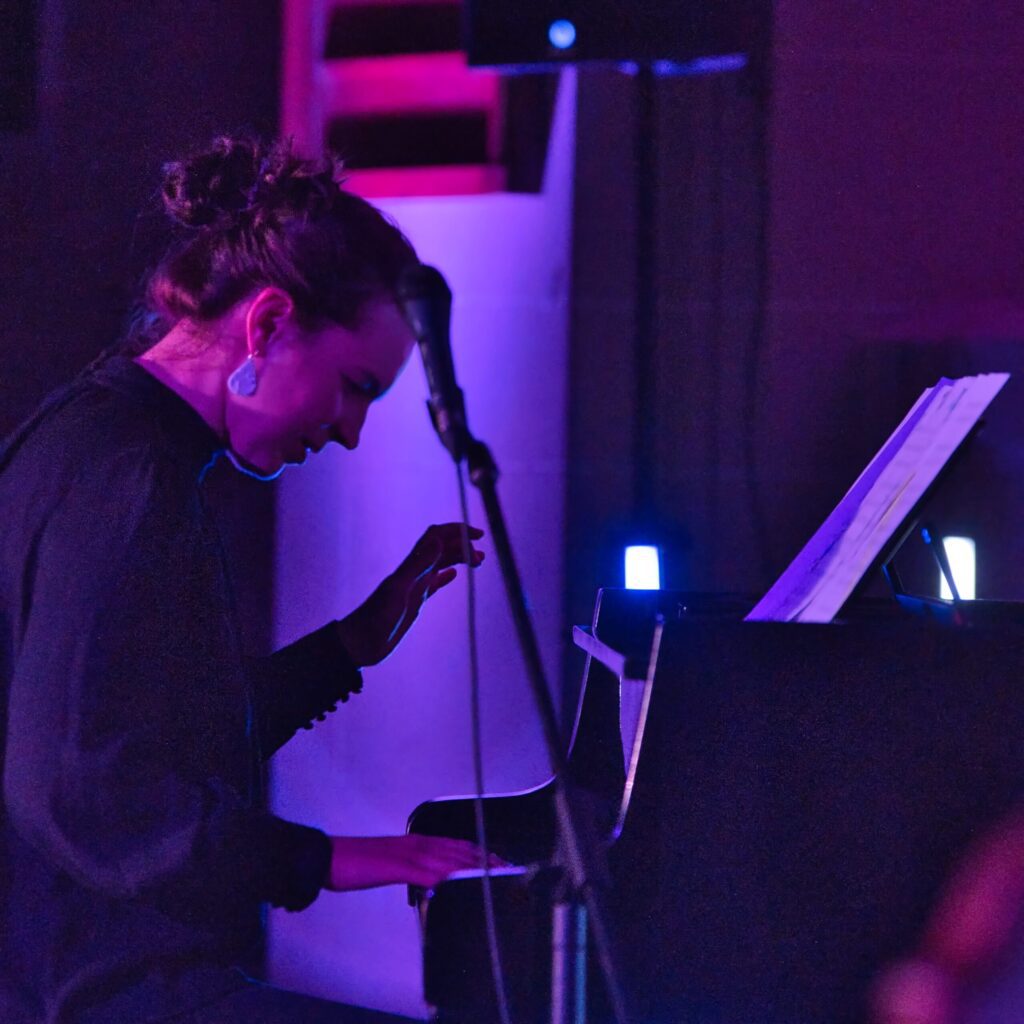
Audiences were spoiled for choice. How many events allow one to sample such an eclectic mixture of innovative music in a matter of hours? For the duration of the night, one could float freely. One moment could be at the church, followed by hearing L CON’s alternative pop retelling of the Heidi story at the Wavelength Stage. After this, Nastasia Y appeared below the starry “sky” of the BLOK Stage. Here, she amplified Ukrainian stories with her piercing battle cry and the shredding of her modern funk rhythm section. There was a sense of being cultured and enriched by the end of the night.
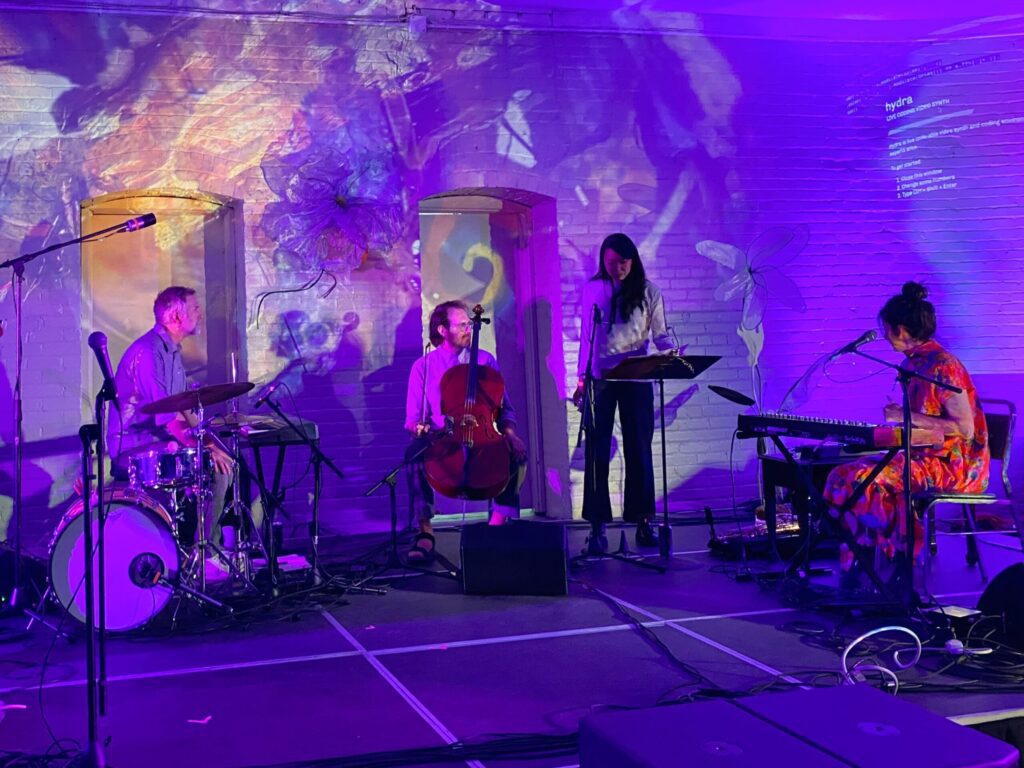
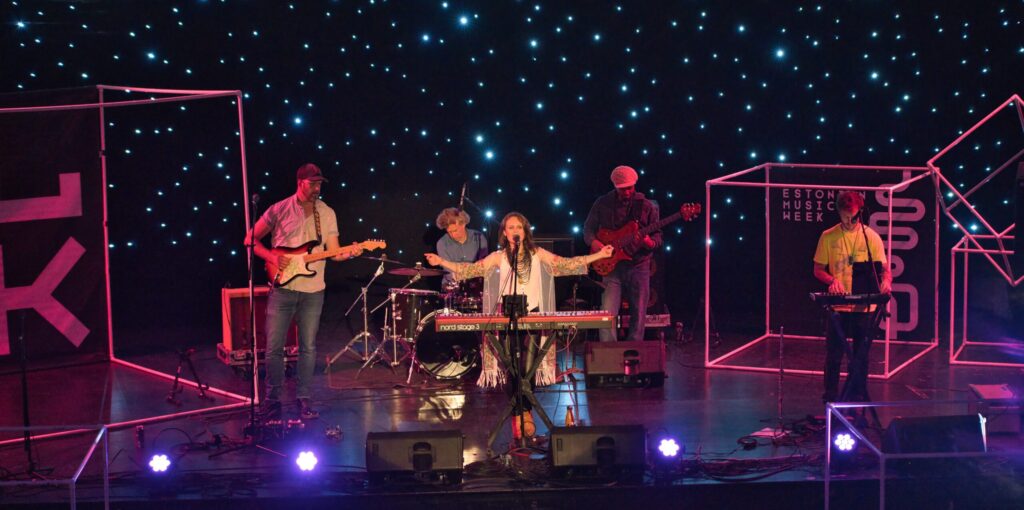
An often-commented on highlight of the festival were the ethereal sets of Mari Kalkun and Kara-Lis Coverdale, which took place throughout the week. Coverdale’s performance on Thursday night was visceral in the way she sent frequencies right through our bones. Kalkun was a grounding force. She sang songs from her upcoming album The Stories of Stonia, shepherding us back to our souls with a channelled ancestral voice.
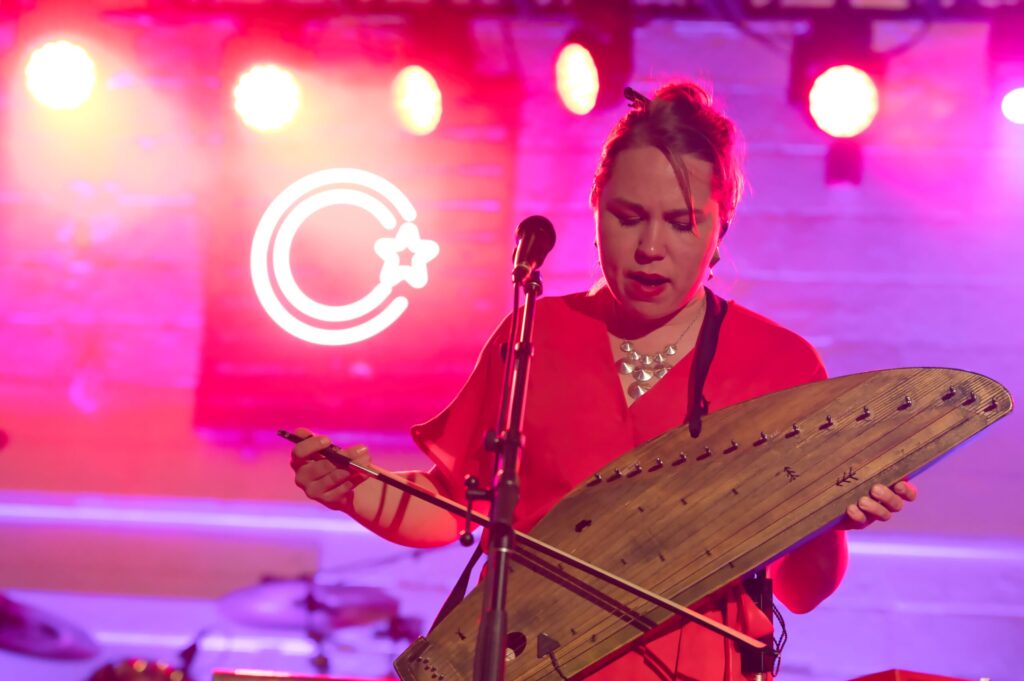
That wasn’t the ending, though. On Friday the 26th, we reconnected with some of these artists in different live formats. Liis Ring brought natural soundscapes and sincere meditations through guitar, voice, and a table full of electronics. DJs kept the place bopping—highlights here were DJ McHi’s beat-making over Estonian choral classics and the tactile mastery of turntablist Erik Laar, who even brought out a violin to complement his sonic palette. All the while, one could enjoy the sometimes neglected crossroads of visual art, installations, wearable art, and music. The Parish Hall was a playful sensory beehive during the Kunstipidu (Art Party).
It’s never a guarantee that people will be open to interactive events, but when it catches on as it did on the 26th, people pour themselves into it. The blank tapestry set out by EKKT (the Society of Estonian Artists in Toronto) was packed with dozens of collages and paintings, representing artists’ identities.
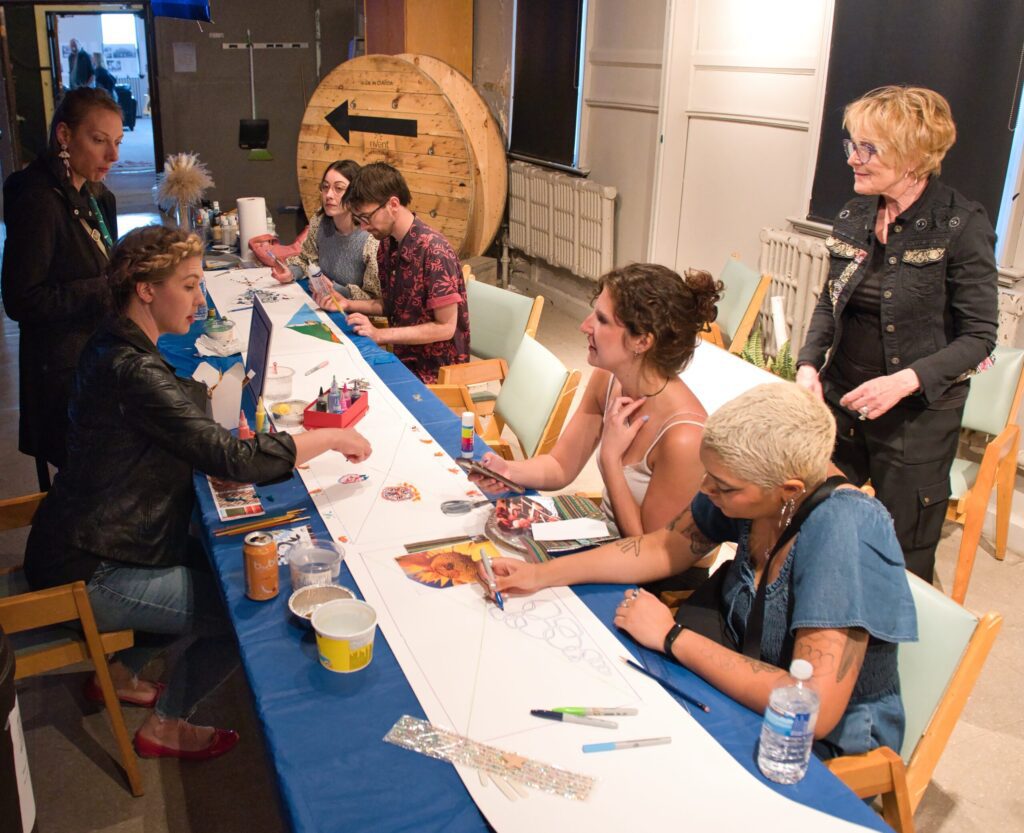
Then, you could rinse and repeat, so to speak, in the wood-burning barrel sauna or in the light and sound bath of Constellation Creative’s “Recycled Landscapes” installation. Indeed, the inclusion of art had a calming effect. One could peruse the ceramics, screen printed clothing, and jewellery of the night market. One could sit and learn traditional ribbon weaving from Veinika Västrik while watching the historic rhythms and harmonies of Ansambel Triskele (which new audiences were exceptionally receptive to). The backdrop for this was Riivo Kruuk’s contemporary, stylish visions of Estonians and their silhouettes. This was both illustrated on fabric and through a live drawing of Arvo Pärt on the wall.
In line with tradition, the city of Hamilton brought its own interpretations and flavours to the festival, when Estonian Music Week took over Collective Arts Brewing on Saturday May 27th. With bus loads of musicians coming in, the show carried on in two phases. First off, the second session of the Nordic Connect Conference honed in on export development, Estonian diaspora artists, and the reworking of folk music. With the onset of evening, audiences were treated to perceptive, stimulating folk from both Camie and her band and the duo Tragedy Ann.
Once again, Mari Kalkun evoked Estonian history with her songs—inspired by regilaul (runic songs)—which united with Zoon's powerful, musical tidal wave, pointing to the genre they created called “moccasin gaze”.
There was a great deal of anticipation for the Canadian premieres of three compositions. Ansambel Triskele was joined by the Hamilton Philharmonic Orchestra, performing “Symphonic Triskele”, a commissioned arrangement from Ardo Ran Varres. Kara-Lis Coverdale performed solo piano for “A Series of Actions in a Sphere of Forever”. Ansambel Triskele also played Kara-Lis Coverdale's composition “Composite Matter” with the HPO. This piece was commissioned by Alan Teder in memory of Velda and Ingvar Kattemaa. Finally, Kirke Karja premiered “Piano Concerto”. Each day of the festival brought something distinct.
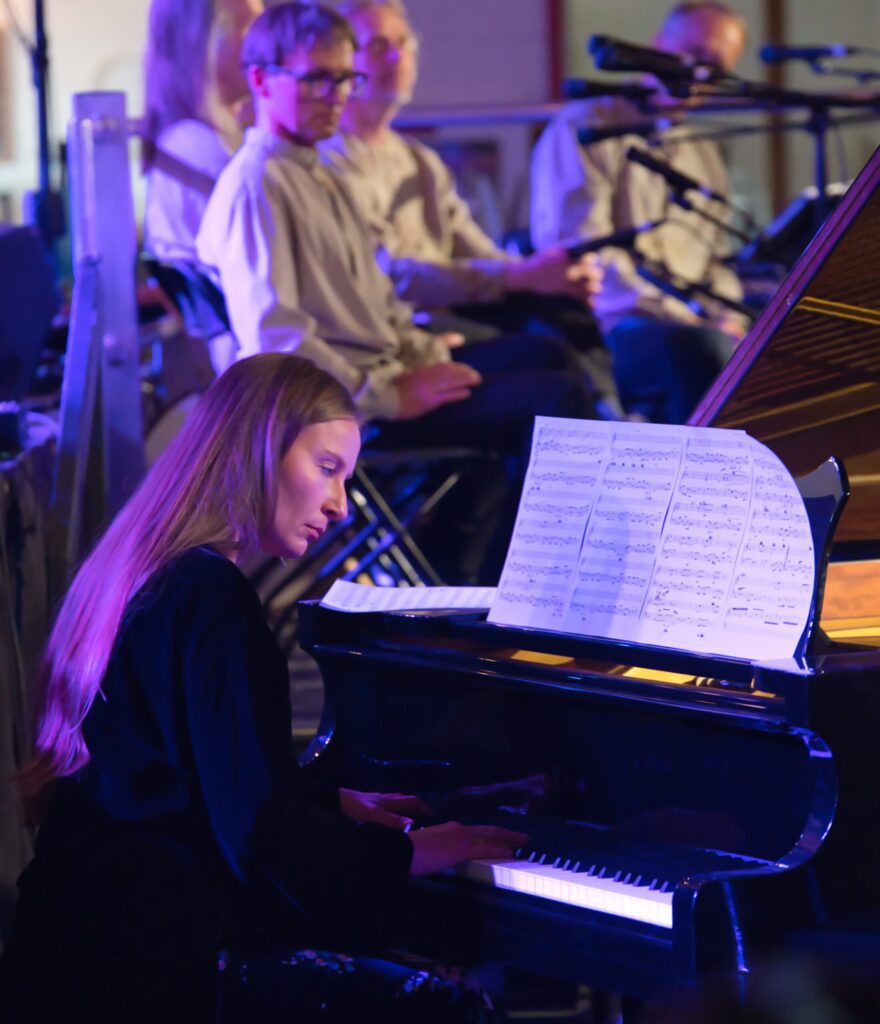
The energy of the festival became more peaceful on Sunday May 28th, the last day, with Ansambel Triskele adding to a service at St. Peter's Estonian Lutheran Church. It was a fitting conclusion, with the final notes coming from something so spiritual, so elemental, and so foundational to Estonian music—regilaul and hymns.

EMW’s fifth anniversary festival was a thorough cross-section of art and music. Creativity, spontaneity, and improvisation were all celebrated throughout the week. By the time the EMW wrap party arrived on Sunday afternoon, the resounding question became, “what’s next?” Now that this edition of EMW is over, we’ll just have to wait and see how its reputation and connections continue to spread out from southern Ontario.
EMW would like to extend a huge thank you to all those who made the festival possible. Read the full list at emw2023.ca/thanks
